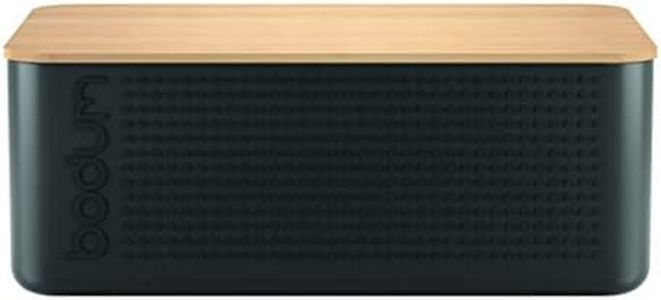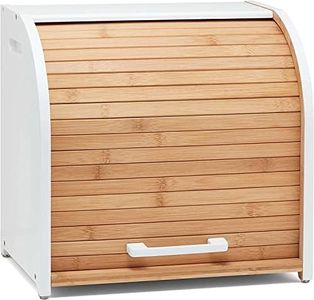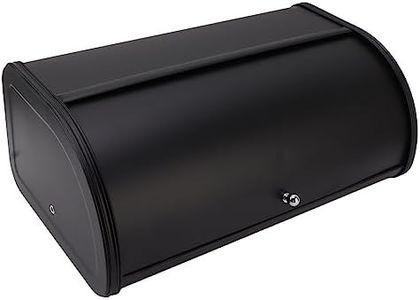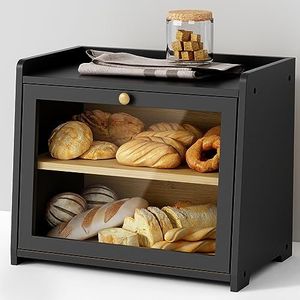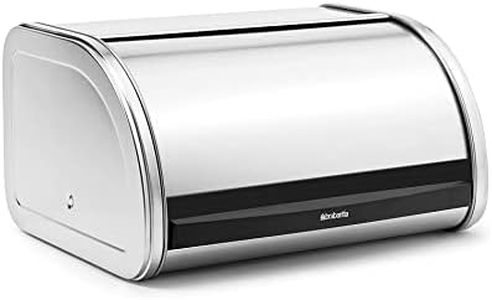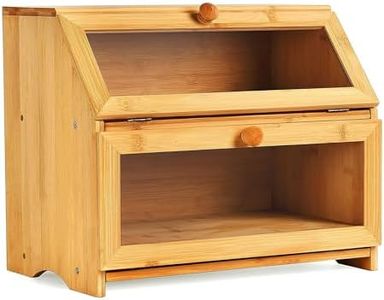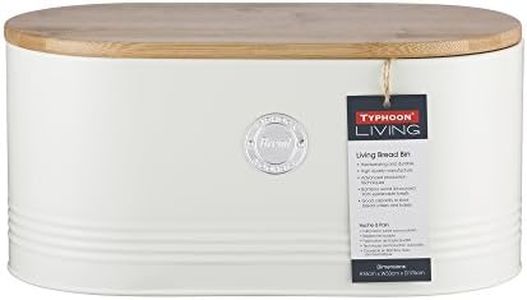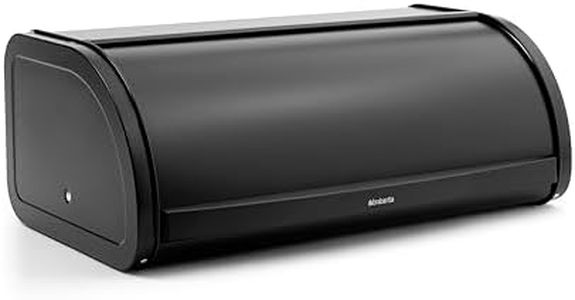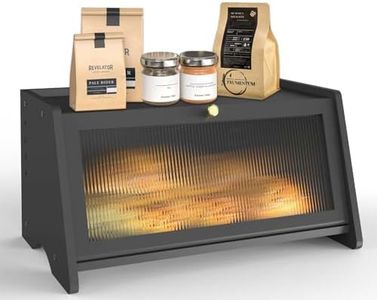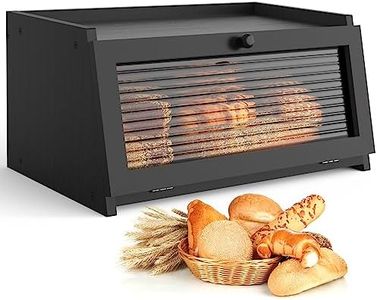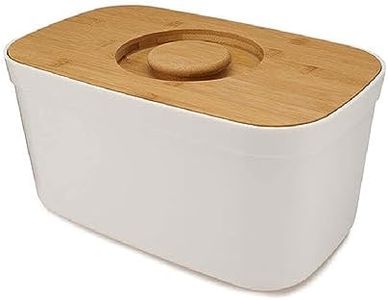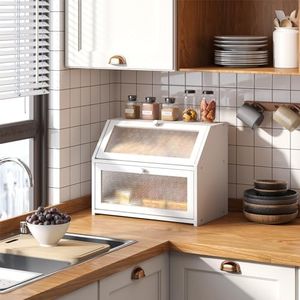We Use CookiesWe use cookies to enhance the security, performance,
functionality and for analytical and promotional activities. By continuing to browse this site you
are agreeing to our privacy policy
10 Best Bread Boxes
From leading brands and best sellers available on the web.Buying Guide for the Best Bread Boxes
Choosing the right bread box can make a real difference in how fresh your bread stays and how organized your kitchen looks. Bread boxes come in various shapes, materials, and sizes, so thinking about where you'll place it and how much bread you usually store is a great place to start. The key is to consider both function and aesthetics, making sure your bread box fits your space and keeps bread at its best.MaterialMaterial refers to what the bread box is made from, like wood, metal, plastic, or ceramic. This is important because it affects how well the box keeps bread fresh and how easy it is to clean. Wooden bread boxes often offer good breathability but may require more care. Metal can be durable but might dent, while plastic is lightweight and simple to maintain. Ceramic can be more decorative but heavier and sometimes breakable. If you want a classic look and a bit of airflow, wood might suit you best. For easy cleaning and durability, plastic or metal could be better choices. Think about how the look, weight, and maintenance fit your kitchen habits.
Size and CapacitySize and capacity describe how much bread you can store in the box. This matters because you want enough room for your usual bread supply, but not so big that it takes up unnecessary counter space. Smaller bread boxes are perfect if you usually buy or bake a small loaf at a time, while larger ones can fit multiple loaves or extra baked goods. Should you often have bulkier bread or store for a family, look for a larger box, but if you have a compact kitchen or live alone, a small to medium box is more practical.
VentilationVentilation refers to tiny holes or features that allow air to circulate inside the bread box. This is crucial because bread needs some airflow to avoid getting moldy while still retaining moisture so it doesn’t dry out. Boxes with no ventilation might keep bread soft for a short time but could lead to mold, while those with too much ventilation may dry out bread fast. For most people, a bread box with a few small holes or a loose-fitting lid strikes the right balance, helping your bread last longer without spoiling quickly.
Lid MechanismLid mechanism is about how the bread box opens and closes—like roll-top, hinged, or lift-off lids. This affects how easy it is to access the bread and where you can place the box. Roll-tops slide open smoothly and are great if you have low clearance above the box. Hinged or lift-off lids require more space above but might offer a tighter seal. If your countertop has cabinets above, a roll-top will likely work better; otherwise, pick the lid style that feels simplest for you to open and close daily.
Ease of CleaningEase of cleaning indicates how simple it is to keep the bread box hygienic. Bread crumbs and moisture can build up, so picking a box that’s easy to wipe down or take apart is best. Plastic and metal boxes generally clean up quickly, and smooth interiors are easier to maintain than ones with many grooves or seams. Consider how often you'll clean the box—if you want less hassle, look for minimal seams and straightforward designs.
Design and AppearanceDesign and appearance are about how the bread box looks and whether it matches your kitchen style. This isn’t just about looks: a well-chosen bread box can free up counter space or double as a decorative piece. If you like traditional, wooden boxes might suit you, while modern kitchens often look great with metal or plastic. Go for what pleases your eye and makes your kitchen feel more inviting.
